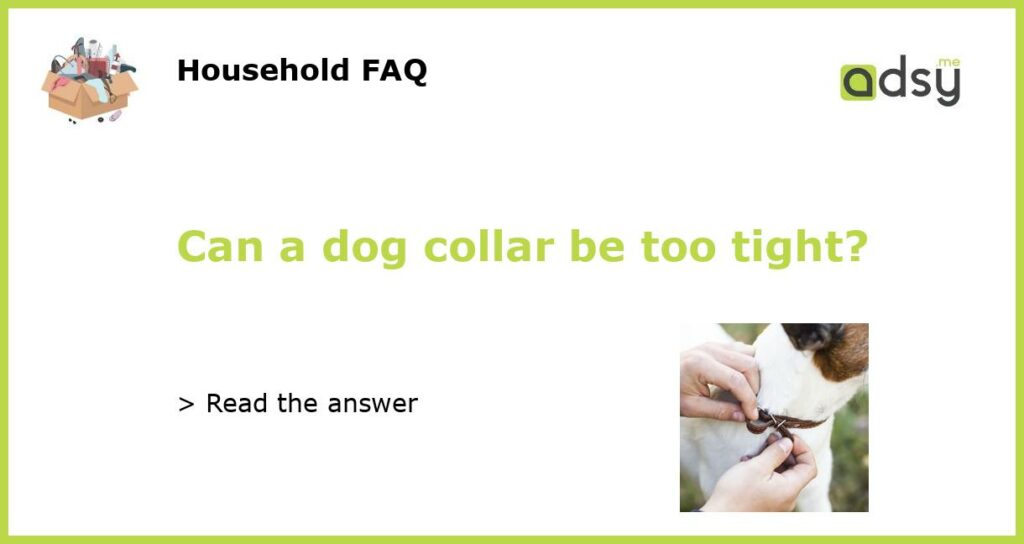Signs that a Dog Collar is Too Tight
Dog collars serve as a necessary accessory for pet owners to keep their dogs restrained, to aid in training, and to attach identification tags. However, it is important to ensure that the collar is not too tight, as it can cause discomfort, injury, or even death to your furry friend. Here are a few signs that indicate that your dog’s collar is too tight:
- Your dog is constantly scratching or biting at the collar.
- The collar leaves indentation marks around your dog’s neck.
- Your dog has difficulty breathing or swallowing.
- Your dog seems agitated or uncomfortable, particularly when the collar is tightened.
Consequences of a Collar That is Too Tight
A collar that is too tight can lead to significant health problems for your dog. These consequences include:
- Choking: A collar that is too tight can restrict your dog’s airway, leading to choking and breathing difficulties.
- Neck injuries: A collar that is too tight can cause pressure sores, abrasions, and even nerve damage to your dog’s neck.
- Thyroid damage: When a collar is too tight, it can put pressure on your dog’s thyroid gland, resulting in a decrease in hormone production.
- Behavioral issues: A collar that is too tight can cause discomfort and pain for your dog, leading to adverse behavioral changes.
How to Ensure Your Dog’s Collar is Not Too Tight
It is crucial to ensure that your dog’s collar is not too tight to keep your pet safe and healthy. Here are some tips to help you achieve that:
- Ensure that you can slip two fingers under the collar. This space allows enough room for your dog’s neck to breathe comfortably and move freely.
- Check for any signs of discomfort or irritation around your dog’s neck. If you notice indentation marks or fur loss, it is time to loosen the collar.
- Consider using a harness instead of a collar, especially if your dog pulls on the leash, as it provides better support and reduces the risk of neck injuries.
- Regularly check the collar’s fit and adjust it accordingly as your dog grows or changes weight.
A collar is an essential tool for any dog owner, but it should not cause discomfort or pain to the animal. Always ensure that the collar is not too tight and regularly check for signs of discomfort or injury. By doing so, you can help keep your furry friend safe and healthy.






